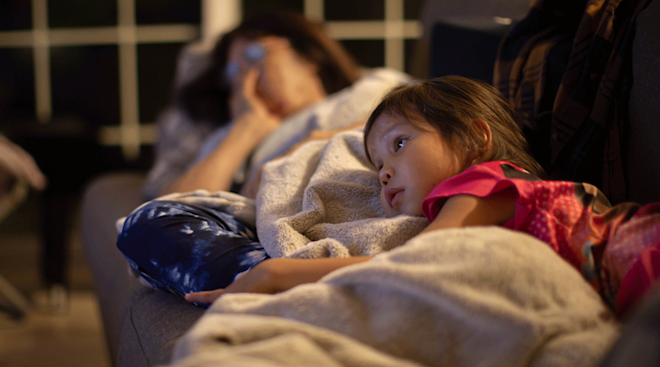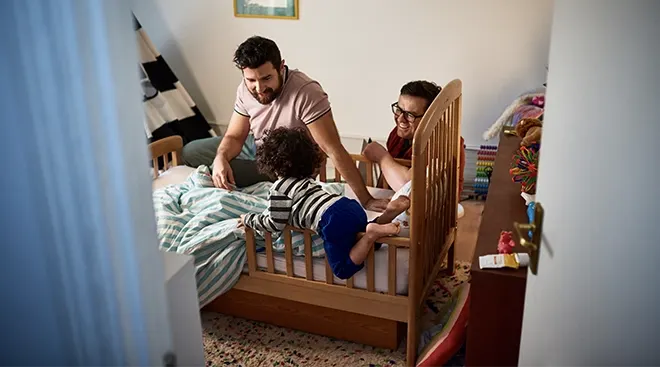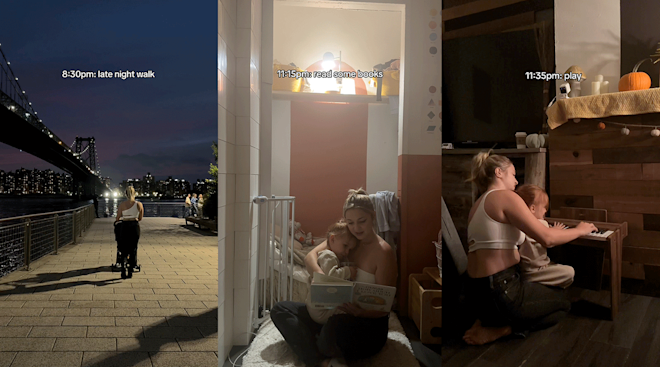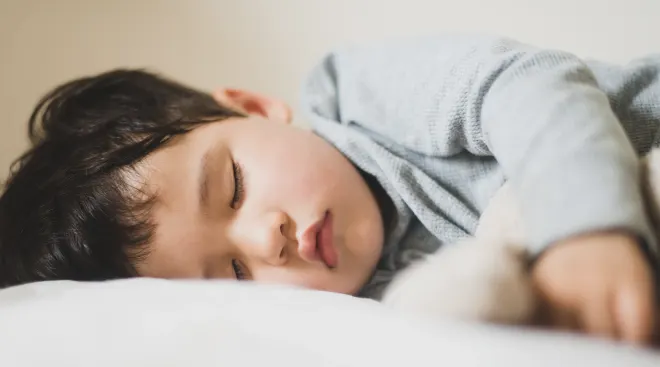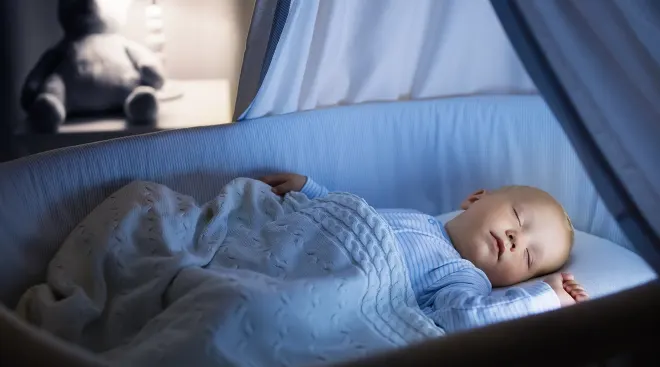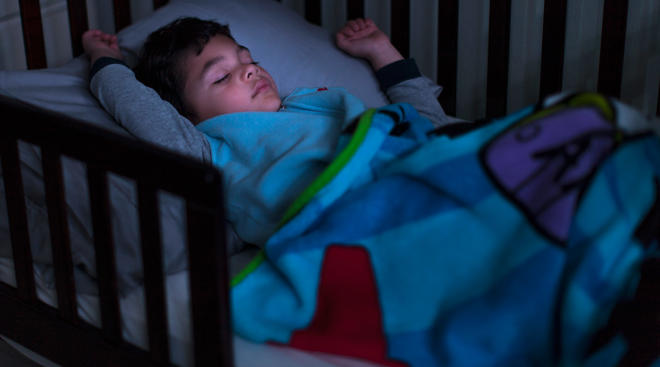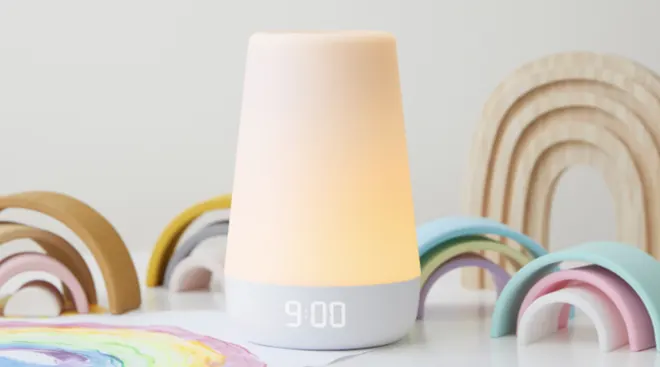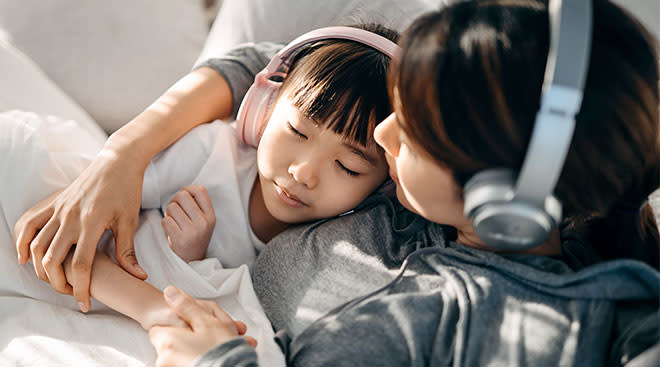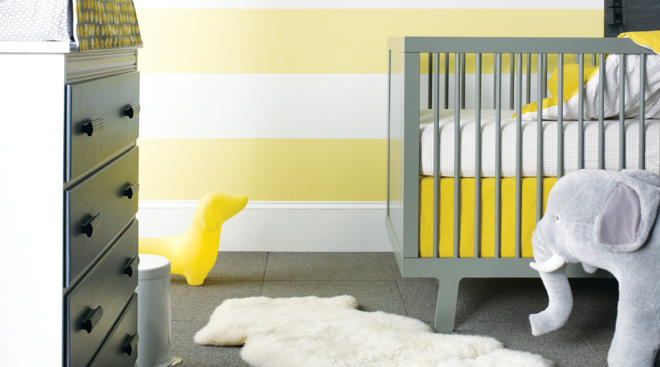How to Cope With the 2-Year-Old Sleep Regression
If your happy little snoozer is suddenly having trouble falling—and staying asleep—they may be experiencing a sleep regression. Toddlerhood comes with many milestones and, as exciting as they are, many of them can wreak havoc on your child’s routine.
Like all the other dreaded sleep regressions you’ve previously experienced (maybe), the 2-year-old sleep regression may rear its ugly head during major moments of growth and transition. As FmrAFBrat, a community member on The Bump, shares, her son experienced one after he moved to his toddler bed: “We did good at first, but then had a month of bedtime mayhem. He’d cry and cry all night, as well as get out of his bed. Now it’s better, but he still has those nights.”
If you’re in the throes of the 2-year sleep regression, you’re far from alone. Here, experts explain why exactly the 2-year-old sleep regression happens, signs it’s happening and how to cope with the unpredictability (and subsequent exhaustion) until it passes.
- The 2-year-old sleep regression is tied to key milestones and other disruptions in routine, like teething, potty training, learning new words, acquiring new skills, travel or life changes.
- It may only last for a few days (fingers crossed!), but can extend on for up two weeks—or more.
- Signs of the 2-year-old sleep regression include resistance to naps and bedtime, frequently waking up at night and waking too early in the morning.
- Creating and sticking to a consistent bedtime and sleep schedule, along with a healthy sleep environment is the best way to get through this phase.
Sleep regressions occur when a child who was sleeping well previously starts to have trouble falling or staying asleep, says Elizabeth Cilenti, MD, MPH, a pediatrician with Northern Virginia Family Practice. So the 2-year-old sleep regression is exactly what it sounds like: a shift in sleeping patterns when a child is around 2 years of age, explains Rachel Mitchell, a certified pediatric sleep consultant and founder of My Sweet Sleeper. “This is primarily due to developmental milestones children are reaching at this time,” she adds. (More on that below.)
According to both experts, signs of a 2-year sleep regression include:
- More frequently waking up at night
- Waking up too early in the morning
- Struggling to fall asleep during bedtime
- Stalling bedtime with more requests for books, water, etc.
- Rejecting daytime naps
“Parents may also notice that their child seems scared or unable to fall asleep alone when they were able to previously,” Mitchell adds.
I expected to be sleep deprived with a newborn in the house, but not like this… It's the 2-year-old that’s killing us right now!
Experts note that regressions are usually a result of major life shifts and developmental milestones. “We don’t always know exactly what causes a sleep regression, but often we find that these are linked to big developmental changes in children,” explains Cilenti. These may include:
- Increased social emotional skills
- Learning new words
- Developing imagination and pretend play
- Increased physical activity
- Potty training
- A spike in separation anxiety
- Teething and incoming two year molars
- Transitioning to a toddler bed
- Growth spurts
- Changes to a family dynamic, like welcoming a new sibling
- Changes in a childcare provider
- Moving or travel
- Learning any other new skill
“These new milestones can be tied to the [2-year] sleep regression—whether it’s fear of the dark, separation anxiety or wanting to have more control over what their parents and others around them do,” Cilenti says. “Sometimes, as they’re learning new skills, it seems a lot more fun to practice those skills than it does to lie down and go to sleep.”
We moved my 2-year-old to her big-girl bed in her new room about 2 months ago (right around her second birthday). I’m pregnant with baby No. 2 (due in about a week or so). She has never been a great sleeper since she was an infant, but before moving her to her bed she was in a great routine—going down in her crib without a fuss and sleeping through the night. The first week we moved her to her bed she did great, but then we had a bad thunderstorm and she woke up screaming. Ever since that day, she won’t go to sleep on her own. We have to stay with her until she falls asleep and now she wakes up two to three times per night and comes into our room. She always says she’s scared of thunder and the dark (even though we haven’t had thunder since that night!). Every time she wakes up I bring her back to her room and have to stay with her until she is asleep again. It’s exhausting, especially at 9 months pregnant!
Does the 2 year old sleep regression affect naps?
Another reason your kiddo might be having trouble at this stage? They’re getting too much daytime sleep and are ready to drop a nap. “Generally by 2 years old, most children are steadily on one nap and should be getting between one-and-a-half to three hours of daytime sleep,” Mitchell says. “Sometimes children become sensitive to daytime sleep totals at this age and may need to have a slightly shorter nap so it doesn’t interfere with bedtime.” However, you’ll want to watch for other signs your kiddo may be ready to drop a nap before doing so, as it’s also “common for children to go through nap strikes from time to time, but that doesn’t necessarily mean your child is ready to drop a nap,” Mitchell adds.
My son is 23 months old and has always been a great napper/sleeper… All of a sudden, he’s refusing his naps and bedtime. He’s so tired, he falls asleep standing up with his head on his lovey, resting on the crib rail… He’ll go as long as an hour fighting before falling asleep.
Unfortunately, there’s no definitive answer here, as it really varies from child to child and depends on the cause of the regression. “Sometimes regressions can last up to four weeks, while other times it’s much shorter lived, between 10 to 14 days,” Mitchell says. According to Cilenti, it could be even shorter than that, only lasting a few days following a trip or hotel stay.
According to Mitchell, at this age, a strong sleep foundation consists of five key aspects: nutrition, activity, sleep schedule, routine and sleep environment. “Often, when your child is struggling with sleep, returning back to these core foundations and making changes where necessary, can help improve sleep challenges,” she says. Here, some 2-year sleep regression tips to help you get through.
Keep the routine consistent
You want to ensure your child has a steady sleep routine to help their circadian rhythm and internal clock. It also helps set them up for good sleep habits later in life. This includes limiting screentime, ensuring bedtimes and awake times are consistent each day and building a sleep environment that’s quiet, dark and distraction-free, advises Allison Kuipers, MD, a pediatrician with Bluebird Kids Health.
Identify the “source” of the regression
Another thing to look out for is whether there are any changes in your tot’s life that may be contributing to their sudden shifts in sleep. “Sometimes it can be as small of a change as spending a weekend away from your house,” Cilenti says. “Understanding that this is your child’s way of working through adjusting to this transition can help parents to get through these sleep regressions, especially if the transitions are not anything that can be easily remedied.”
Keep things in perspective
While your little cutie may give you a harder time when it comes to the 2-year sleep regression, remember it’s all part of their growth. “At 2 years old, your child is able to communicate better and is learning where their boundaries are,” Mitchell says. “Children start to understand cause and effect at this stage, so ensuring that you maintain clear boundaries is important as they learn to push them. This is especially true around sleep periods, as they may start to reject naps and/or night sleep.” To help, Kuipers recommends allowing them some control over their sleep routine, such as with a routine of saying goodnight to their stuffed animals or choosing a book to read together. You can set a time limit on it, but this can be one element of their bedtime routine that they’re “in charge” of.
We went to Yosemite with my mom and in-laws for my daughter’s birthday and Mother's Day weekend. We had a great time… but her sleep schedule was crazy. She had a hard time falling asleep in the hotel room, she’d randomly nap in the stroller or the car seat, and, to sleep at night, she would need me to ‘Mama sleepy down’ (i.e. sleep on the floor next to the pack and play). I did it, just to keep some silence in the hotel room, but it's amazing how quickly bad habits develop. Last night (our second night back at home), she was wailing for me to "sleepy down" on and off for an hour. Cannot wait to get her back on track.
Both experts note you should reach out to your pediatrician if you’re struggling with your 2-year-old’s sleep or feel their behavior is out of the norm. “Toddler sleep regressions are a common reason for parents to bring in their kids just for us to check and make sure there doesn’t seem to be anything medically wrong,” Cilenti says. Mitchell adds that if your child is waking every hour or two throughout the night, it may signal a more serious issue that needs to be addressed.
Frequently Asked Questions
Do all toddlers have sleep regressions?
“While all toddlers experience progressions and developmental leaps, not all toddlers experience true sleep regressions, and, even when they do, this looks different for every child,” Mitchell says. All this is to say there’s no clear answer here because it varies so much. For some toddlers the sleep regression may be so subtle you don’t even register it, while for others it may feel unmanageable. “It really depends on the child, how strong their sleep foundation is and what their individual temperament is like,” Mitchell adds.
How much sleep does a 2-year-old need?
Toddlers around 2 years old need 10 to 12 hours of sleep at night and 1.5 to 3 hours of daytime sleep per day, totalling between 11.5 to 15 hours of daily sleep. This sleep total is crucial for their mental, physical and emotional development.
Can a 2-year-old sleep regression start early?
Again, there’s no set timeline for when a sleep regression may happen, so they can occur earlier or later depending on your child’s individual development and your family’s circumstances.
Should you let your 2-year-old cry during a sleep regression?
This is really up to you! If you want to give the cry-it-out method a try with your toddler, that’s your prerogative. Just keep in mind that it might not go as planned. “With toddlers this is especially tricky,” Mitchell says. This is because toddlers love to push limits—and are known for crying when those boundaries are firmly kept.
Should you let your toddler sleep with you during a sleep regression?
Ultimately, this depends on you and what’s best for your child and family. If sharing a room helps everyone get more sleep during a 2-year-old sleep regression, then do what you have to do. But keep in mind your kiddo may come to expect it even after. “Anything you start during a regression is going to be something that the child then comes to expect,” Mitchell says. “If you aren't wanting to do that long term, it might not be the best idea to start.”
Is there a 2.5-year-old sleep regression?
You may also find that your child hits a sleep regression closer to 2.5 years. It really depends on what’s happening in your child’s life or what stage of development they’re reached. “Any shift in the child's sleep at this stage has to do with the crib to bed transition, potty training or becoming sensitive to daytime sleep totals,” Mitchell says.
At what age does the hardest sleep regression occur?
The hardest sleep regression usually occurs when little ones transition from a crib to a toddler bed, which usually happens between 2 and 3 years old, Mitchell says. “This can be a big change that a lot of toddlers struggle with and can completely change the child's sleep habits from what they were previously.” A surprising sleep regression for most parents, she adds, comes at 6 years old, when many kids become afraid of sleeping alone and may have more nightmares.
Toddler sleep regressions are tough and can sometimes even be more challenging to navigate than infant sleep regressions. “They are so much bigger and can keep themselves awake much more readily,” Cilenti says. But, while they may be difficult, Mitchell says they’re something to be expected rather than feared. “All children are going to experience regressions and progressions at some point, and in the first two years of life, children are changing a lot. It’s normal to see sleep impacted,” she says. The best way to get through it is with consistency, kindness and lots of love.
Please note: The Bump and the materials and information it contains are not intended to, and do not constitute, medical or other health advice or diagnosis and should not be used as such. You should always consult with a qualified physician or health professional about your specific circumstances.
Plus, more from The Bump:
Elizabeth Cilenti, MD, MPH, is a pediatrician with Northern Virginia Family Practice. She completed her medical degree and residency at Indiana University School of Medicine and her master’s degree in public health at the Harvard T.H. Chan School of Public Health.
Allison Kuipers, MD, is a pediatrician with Bluebird Kids Health. She earned her medical degree from the University of Virginia School of Medicine and completed her residency at Medical University of South Carolina.
Rachel Mitchell is a Boston-based certified maternity and pediatric sleep consultant, former night nanny and mom to seven. She’s the founder of My Sweet Sleeper, a team of maternity and pediatric sleep specialists that help growing families get some much needed shut-eye, as well as the founder of Sweet Sleep Academy, a pediatric sleep consultant certification program.
Learn how we ensure the accuracy of our content through our editorial and medical review process.
Navigate forward to interact with the calendar and select a date. Press the question mark key to get the keyboard shortcuts for changing dates.





































